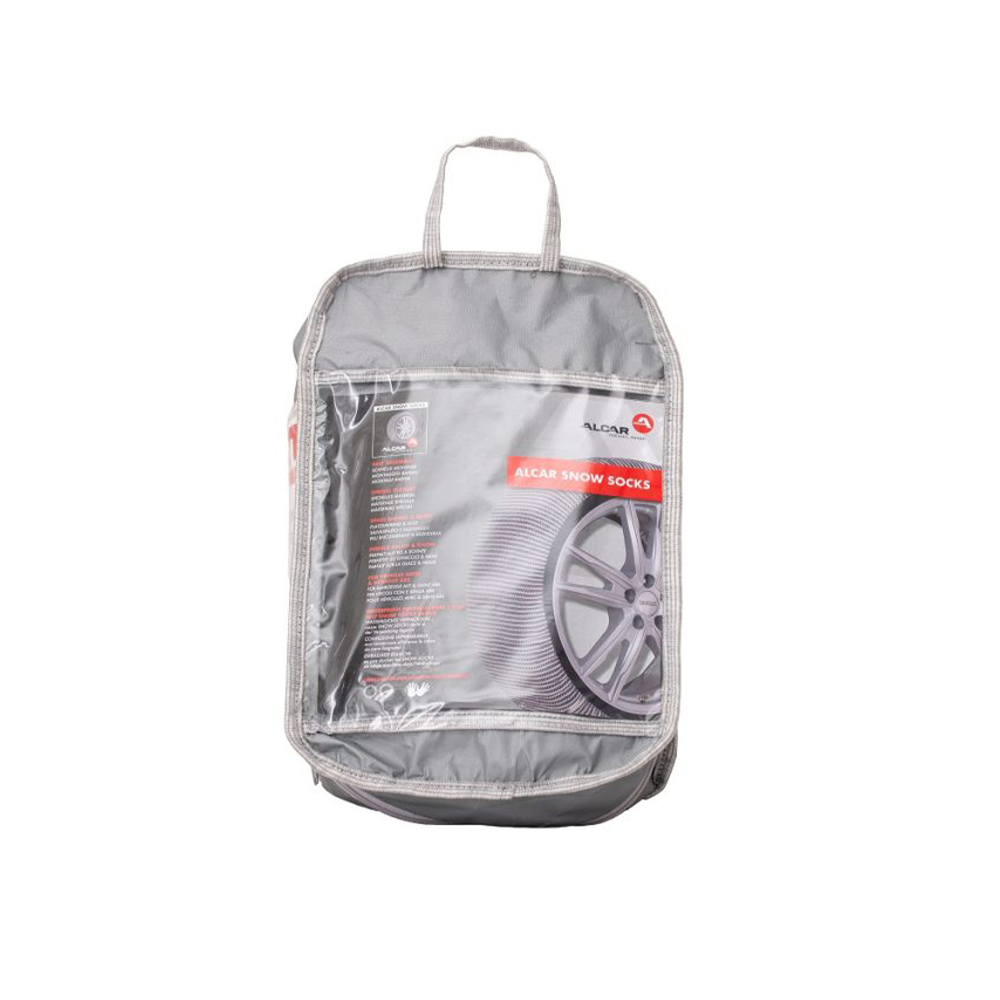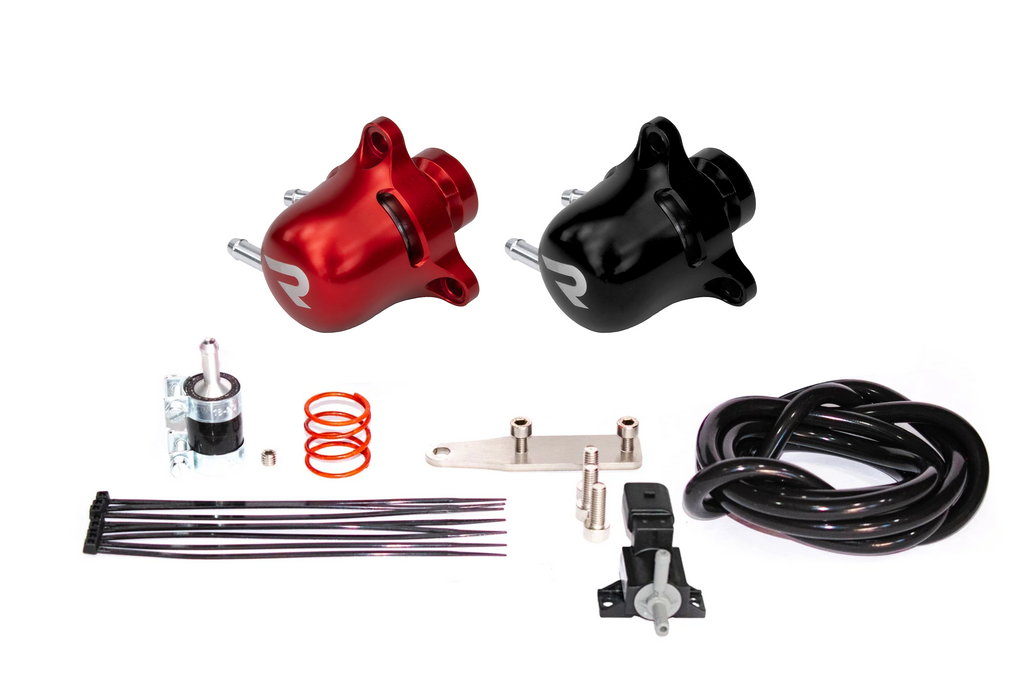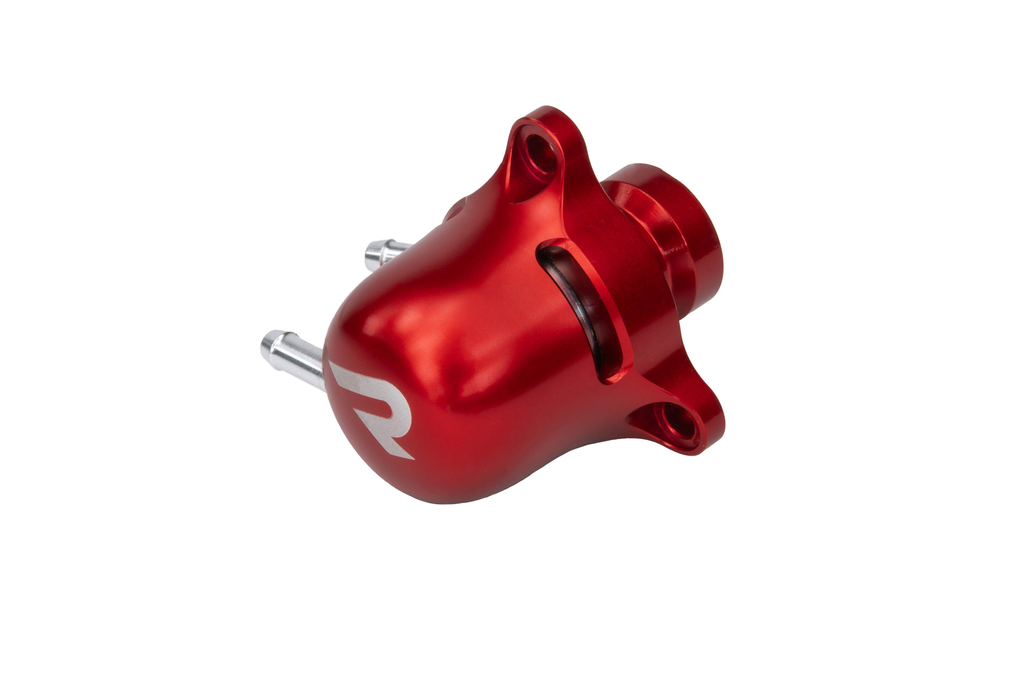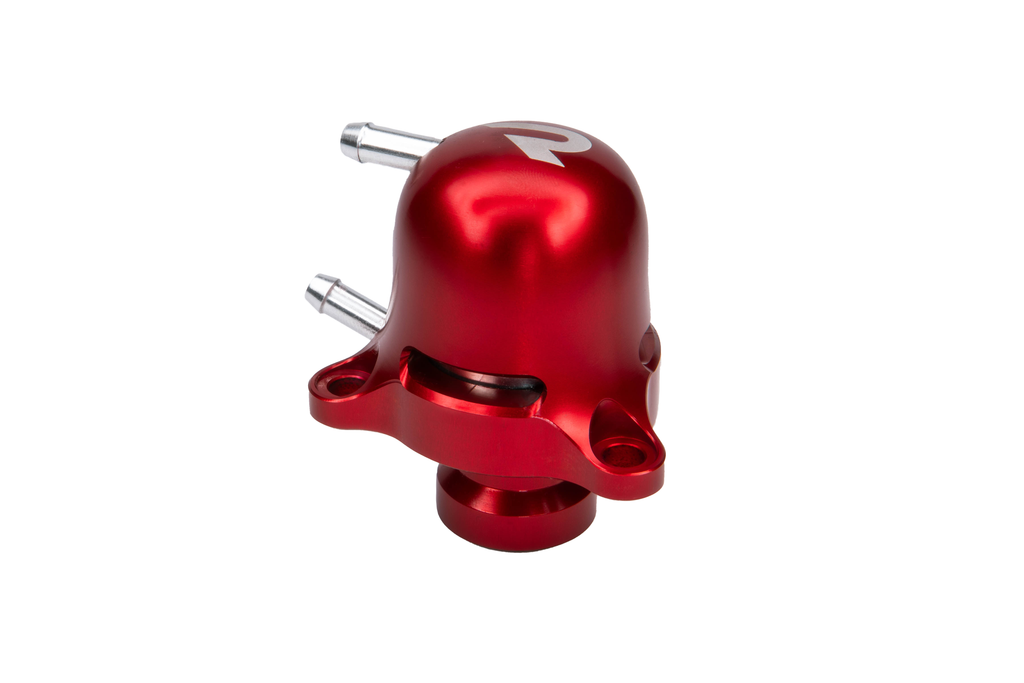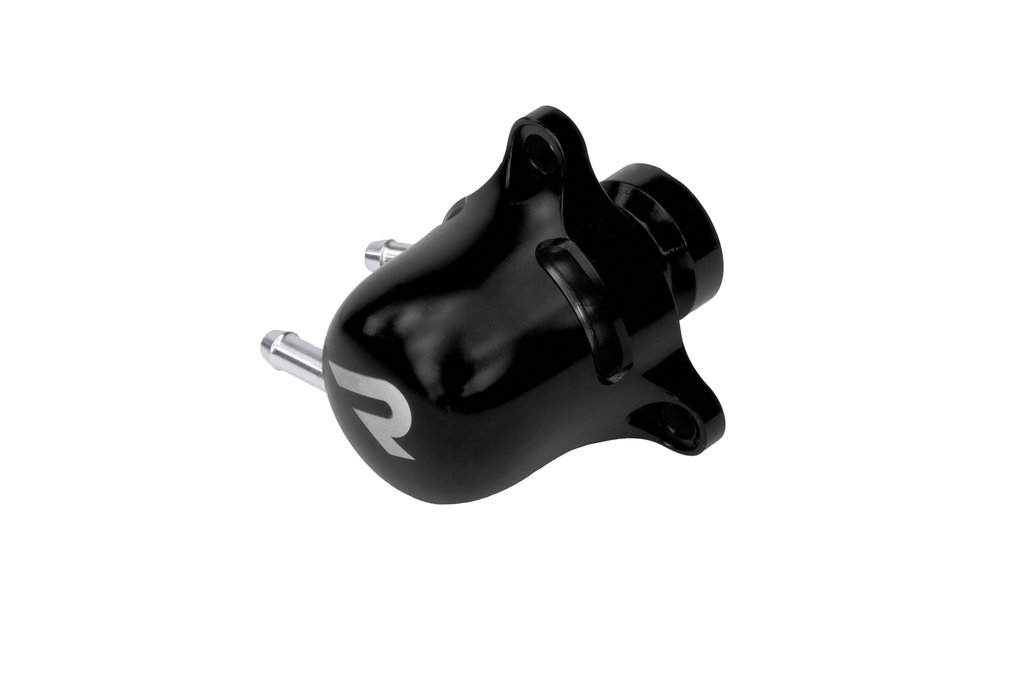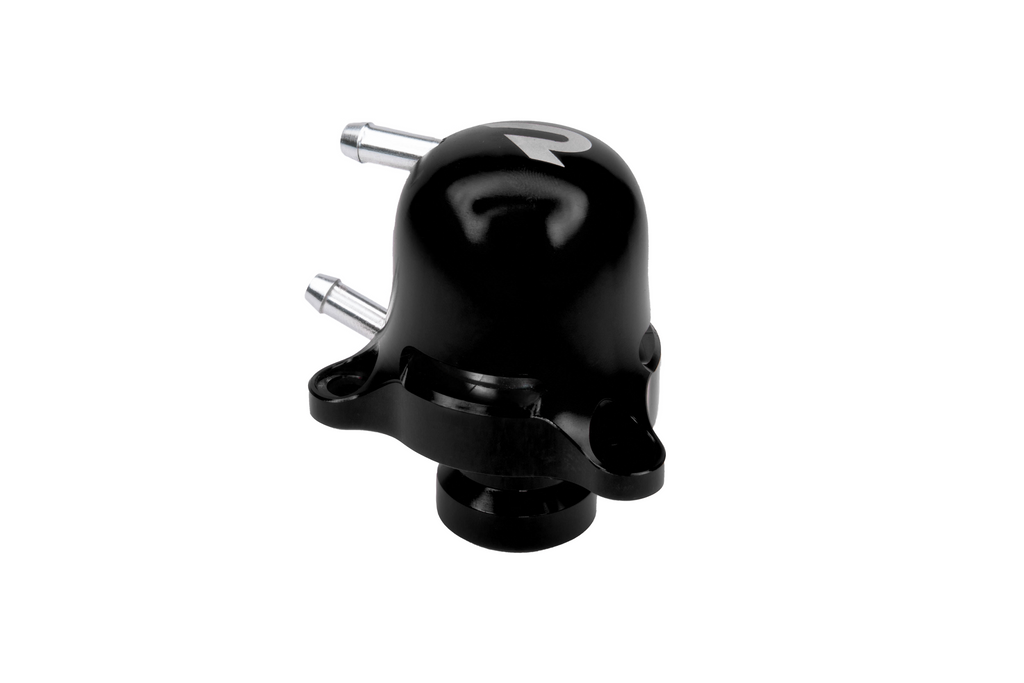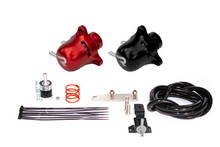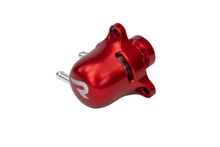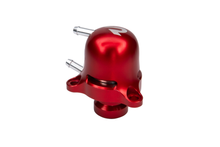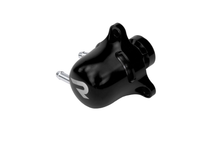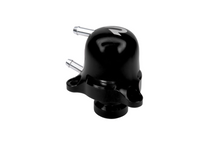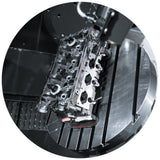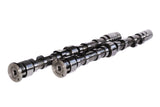Our Pressure Relief Piston Valve kit, is a complete bolt-on kit. The Valve works perfectly without triggering any check engine light in the dashboard. The Piston type valve is engineered to remedy the issues experienced with the factory valves when their diaphragm raptures or when their piston breaks, which results in boost leaks and premature wear of the turbocharger.
Our valve is designed to work a lifetime without fail because it is serviceable.
Specifications:
- CNC Billet Alloy
-
High Temp Viton O-rings
- Smaller Vacuum space than any other valve in the market
- Fast Piston Opening
- Better Throttle Response
- No Boost Leak
- Serviceable
The Kit includes:
- Relief Valve
-
Boost Tap/Vacuum Adapter
- Electric Solenoid
- Solenoid Bracket
- Vacuum Hose
-
Zip Ties
- Screws
- Stiffer Spring
What is the purpose of a relief valve?
Is the relief valve of the RTMG turbocharger better than the factory electric one?
Although the relief valve may seem like a simple component, it has many roles in turbocharged engines. The new-generation blow-off valves use the car’s electrical system to open and close the valve as needed, controlled by the engine’s ECU. The primary role of the valve is to protect the turbocharger by releasing compressed air when the driver lets off the gas pedal, preventing the air from flowing back into the turbocharger.
A few words about the turbocharger...
The turbocharger consists of two separate turbine wheels. One is driven by the exhaust gases from the engine’s exhaust manifold, which in turn spins the compressor wheel via a shaft. This compressor wheel compresses atmospheric air, increasing its pressure and feeding it into the engine. However, in factory cars, the pressure levels are quite low, so the valve doesn’t need to work as hard. When an engine is modified for more power, the turbo’s pressure can sometimes increase to more than twice its original level, e.g., from 0.5 to 1.5 bar. This is where issues with the factory electric valve start to arise.
The problem with the factory valve is that it opens and closes using an electric solenoid, which has a fixed force output. In other words, the solenoid that closes the air escape port in factory conditions (e.g., at 0.5 bar) does not increase its strength when a modified engine operates at 1.5 bar. As a result, air escapes through the factory blow-off valve, leading to horsepower loss, even with a basic stage one tune.
With the factory valve, there are several disadvantages. First, you cannot achieve the optimal performance from the engine tuning you desire. More critically, the air escape forces the turbocharger to over-rev in order to reach the desired boost level, putting strain on the turbo’s bearings and raising temperatures, which can lead to timing retardation and shorten the turbo’s lifespan.
In manual transmission cars used for sport, the blow-off valve has an additional role. Every time the driver shifts gears, releasing and pressing the throttle, the valve must relieve the air system efficiently to prevent the turbo from losing speed, which would cause turbo lag. How does the turbo lose speed? When the driver lets off the gas and presses the clutch to shift, the exhaust gas production stops, so the turbo loses kinetic energy from the exhaust. More importantly, the compressed air in the pipes, with nowhere to go because the throttle is closed, flows back into the turbo. This air slows down the turbo, causing its RPM to drop, a disadvantage known as "turbo lag"—the time it takes for the turbo to regain its RPM and boost pressure when the driver steps on the throttle again. For example, if it takes 0.5 seconds to regain boost across four gear shifts, the car will lose 2 seconds in total acceleration time.
Another significant disadvantage, if the blow-off valve is not properly synchronized or absent, is the axial stress on the turbo’s support bearings. This happens because the sudden deceleration of the turbo when the gas pedal is released puts reverse stress on the bearings, again shortening the turbo’s lifespan.
Conclusion
The faster and more efficiently the turbo’s air system is relieved when the throttle is released, the more time is saved, leading to better acceleration during gear shifts while also prolonging the turbo’s life.
The RTMG PERFORMANCE Blow-off Valve
Designed to operate mechanically using boost pressure rather than electricity, the RTMG valve has the advantage of functioning at all pressure levels without losing any air. How does this happen? It’s all about physics. We use a piston that has a larger diameter on the pressurized side (the driving side) than the air escape port of the turbocharger. This means that the sealing surface of the piston is larger than the force trying to open it. The higher the turbo boost pressure, the greater the pressure on the piston, achieving a perfect seal without leaks at all boost levels. Pressure times surface area... physics wins.
Another advantage of the RTMG PERFORMANCE blow-off valve is that it retains the ECU's command via an electrovalve included in the kit, so it functions like a factory part without triggering a check engine light or any malfunctions. Open-type blow-off valves vent compressed air to the environment, while closed-type valves release the air back into the turbo intake, producing a sportier sound for tuning enthusiasts. Our blow-off valve is made from aircraft-grade aluminum, capable of withstanding forces ten times greater than the usual stress, ensuring reliable performance.
The valve's design is unique, with a closed-circuit construction at stress points, eliminating any potential for air leakage. The O-rings are made from Viton, which can withstand much higher temperatures from the engine, and all the vacuum pressure hoses are made of silicone. The control valve used for the blow-off valve is made by Pierburg, a top-quality manufacturer in the industry. To protect against corrosion, we use a durable anodized coating, available in various colors, which adds both hardness and a shiny finish to the valve.
Our blow-off valve upgrade kit includes everything necessary for installation and is ready to use—nothing more is required. Professional installation is recommended to ensure optimal product performance, as incorrect installation could lead to malfunction.
Welcome to our team!

